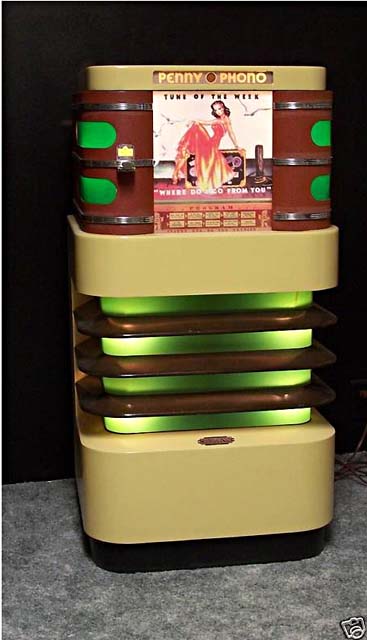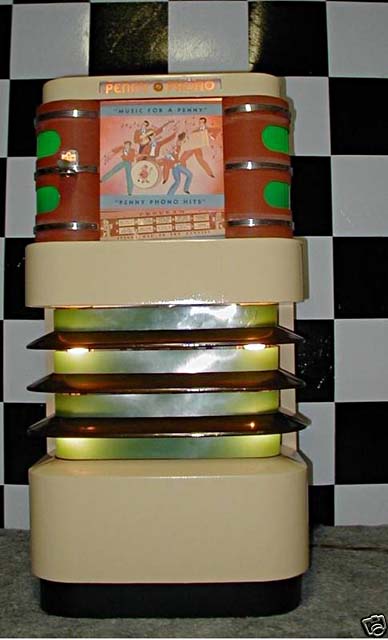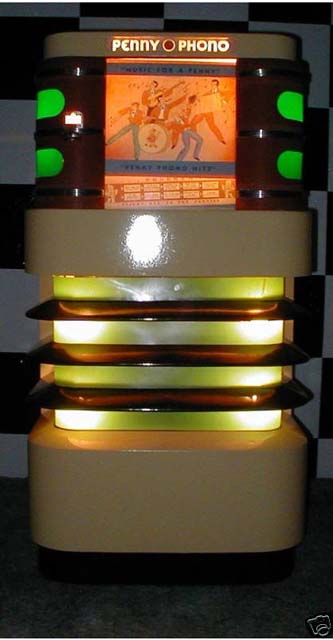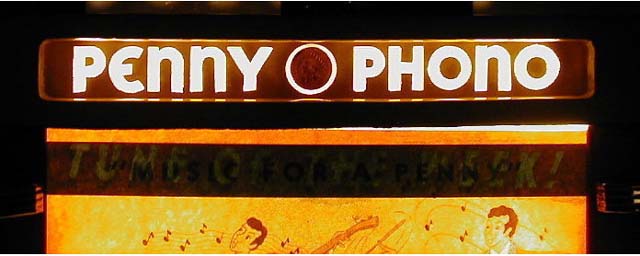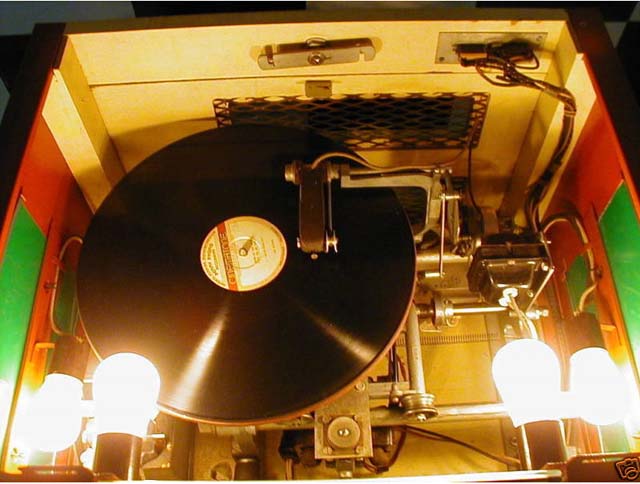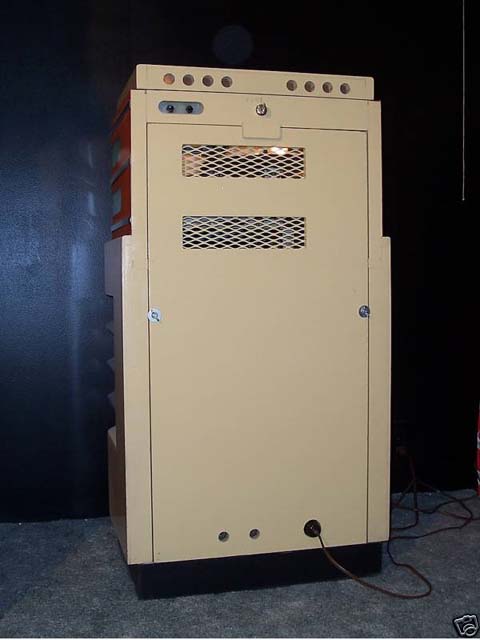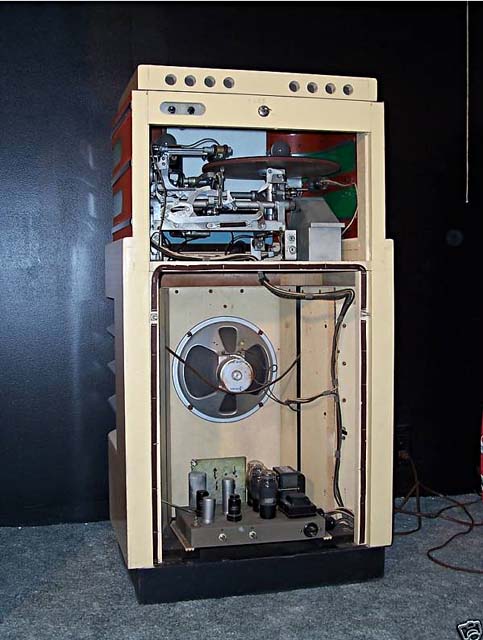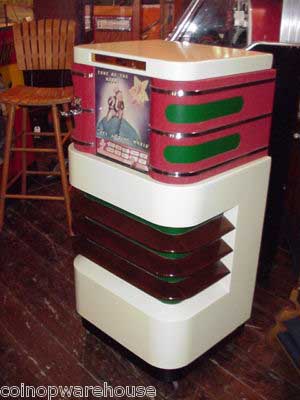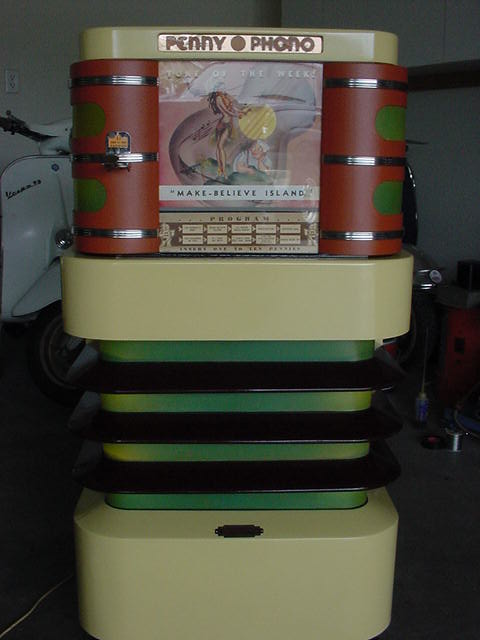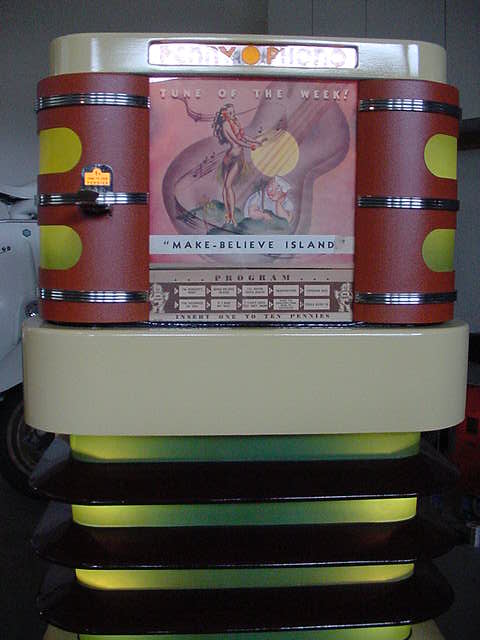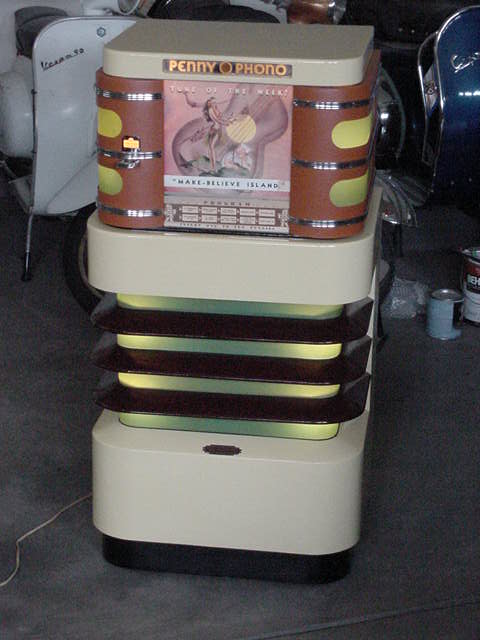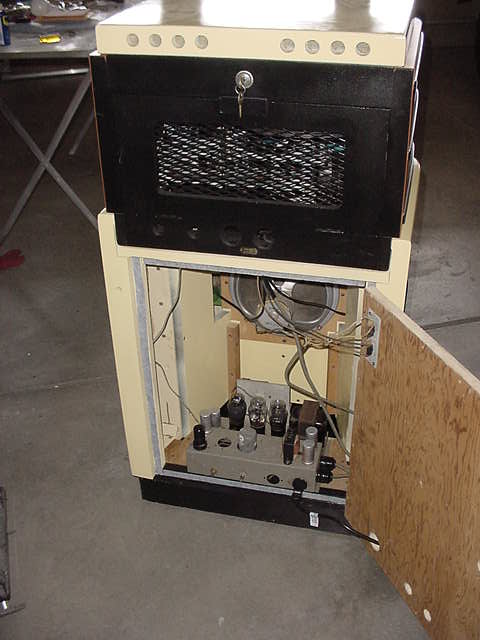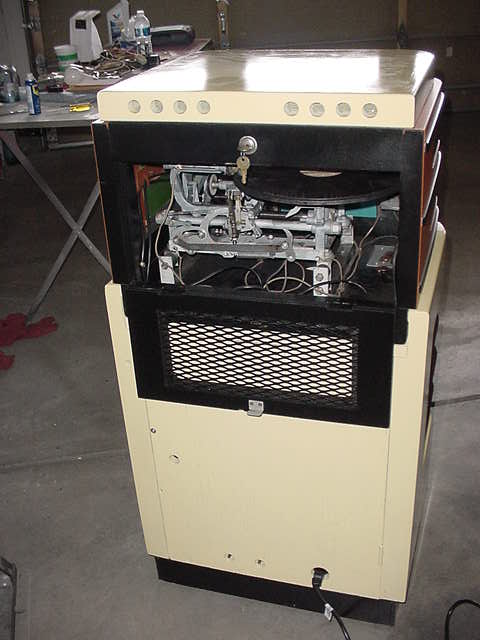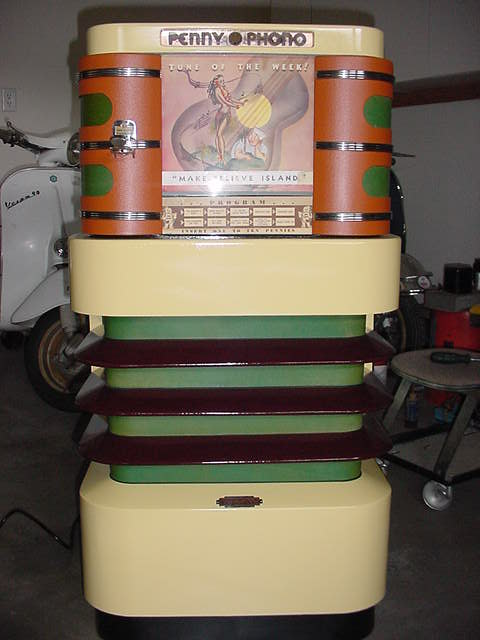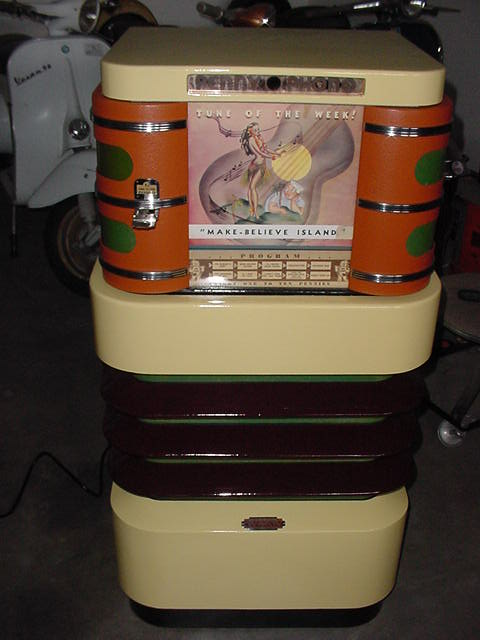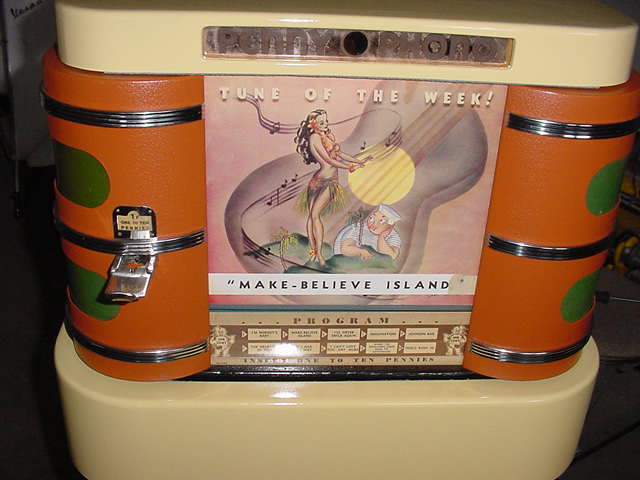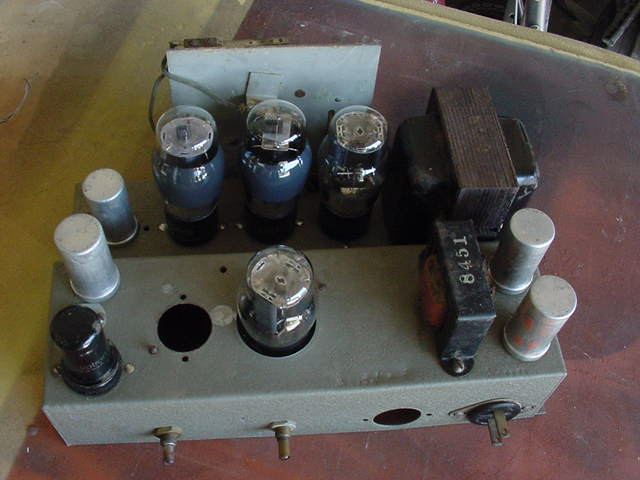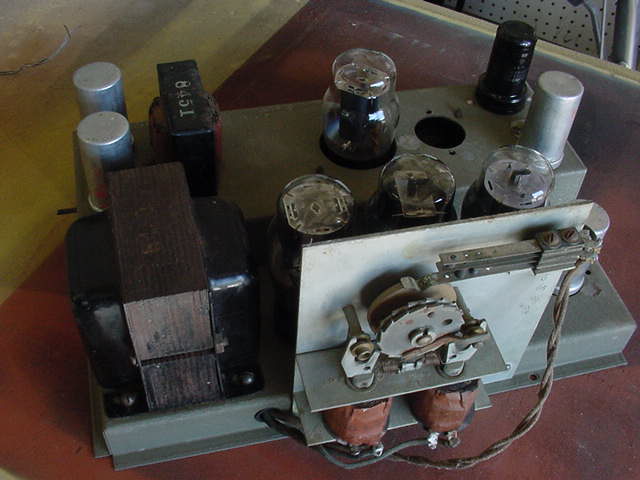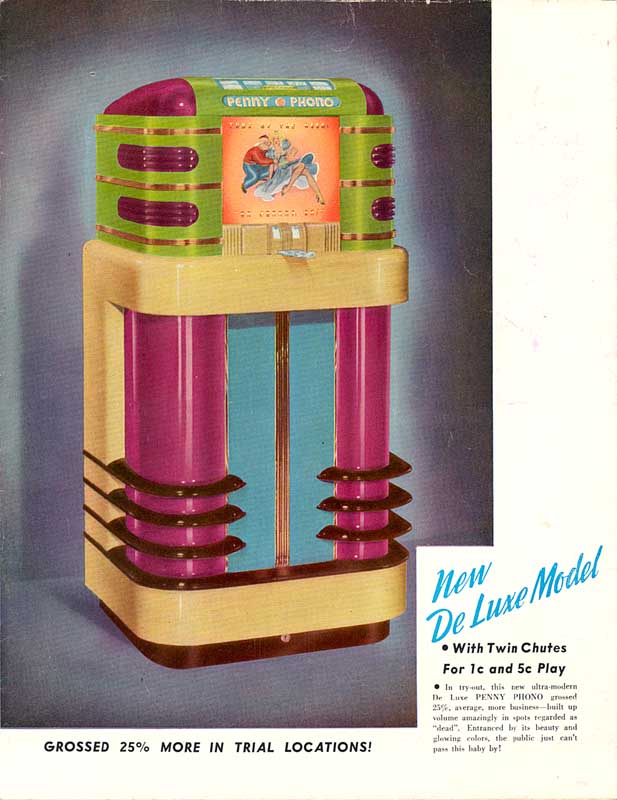|
Automatic Age, 9/1939:
"Most startling innovation of this quality music machine is its PENNY PHONO
RECORD, a 12-inch disc with 20 melodies on it - ten to a side. Cinematone
Corporation not only only manufactures PENNY PHONO, but also waxes and processes
its own records, using top-flight orchestras and talent recruited from
transcontinental airshows and film studio recording orchestras."
"The machine comes in two models, counter and console. The size of the counter
model is 20 inches long by 16 inches wide by 18 inches high, with a portable
loud speaker which can be placed anywhere in location. The console, or floor
model, has a built-in speaker. Styled by one of the country’s leading industrial
artists, “Penny Phono” has the additional merchandising features of illuminated
sides, and one of the most original exploitation ideas ever conceived for a
machine of its type. This is a colored lithographed card, fully illuminated
which, in cartoon form, characterizes the hit tune of the week, and which is
changed every time the record is changed. By the insertion of from 1 to 10
pennies, the record automatically starts and stops in silent grooves. Tunes are
approximately two minutes in length. When the center end of the reached, the
tone arm is automatically raised and returned to the first record starting
point. Customers can play from 1 to 10 tunes at a time, receiving a wide variety
of the world’s finest music for their pennies."
Penny Phono in two versions: One piece cabinet
| Two pieces cabinet |
